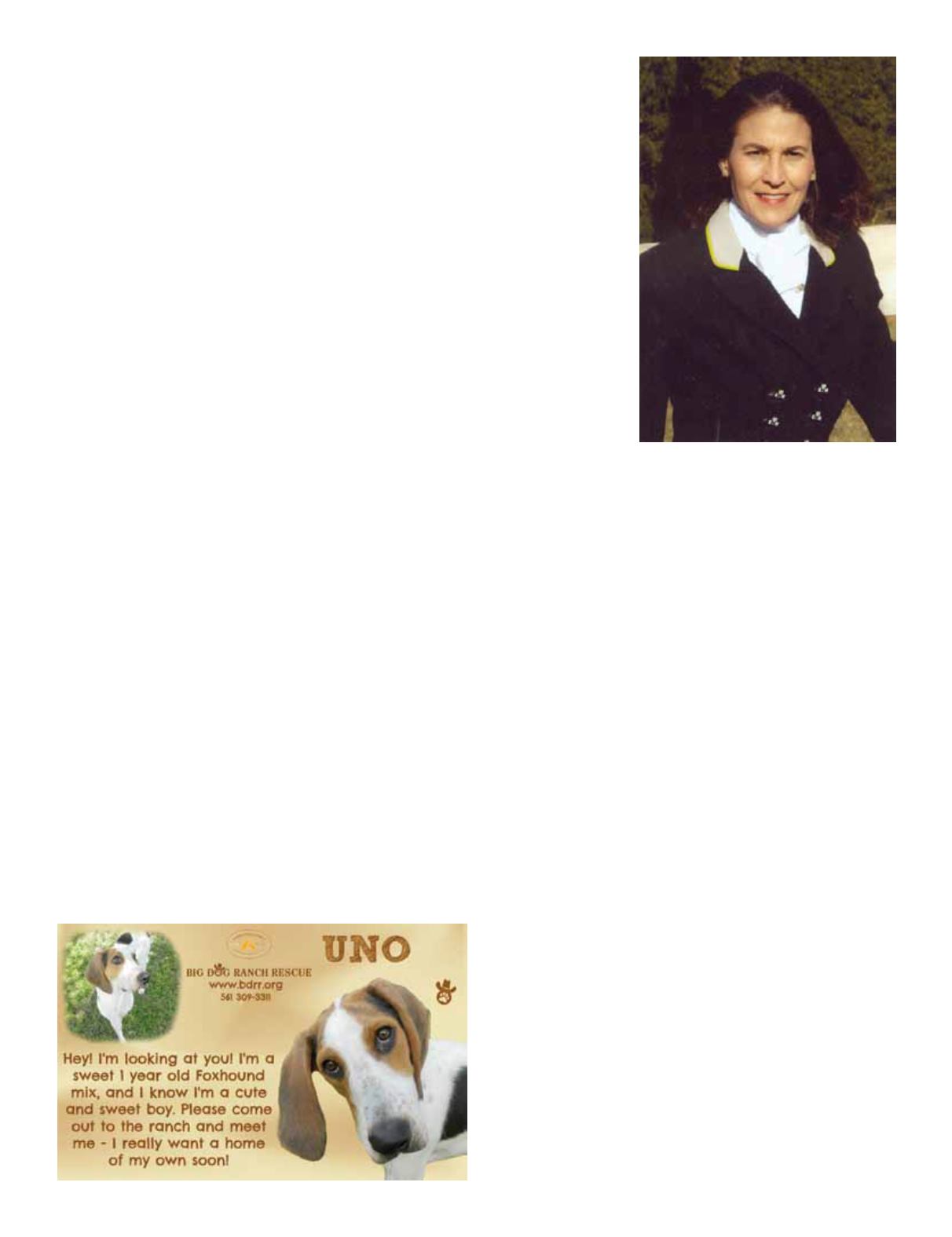
100 SIDELINESMAY 2014
FORHORSEPEOPLE • ABOUTHORSEPEOPLE
e
Equine Law
By LisaHollister, Esq.
Readersareused to reading that horseownersareprotectedby
their States’ EquineActivityStatutes, soanother rulingby aState
Supreme Court involving statutory liability protection is nothing
new. What is new in the case of Smith v. Landfair, 135 Ohio St.
3d. (2012) is that thedecisiondeliveredbyOhio’sSupremeCourt
specifically addresses the issue of whether the individual who is
hurt bymerelybeing in the vicinityof ahorse canbe considereda
spectator andas a result an equine activity participant.
Facts
Horse owner and defendant, Donald Landfair, boarded two
horses at a racing stable. The stable was owned by Roshel
Smith’s father. Smith not only worked at the stables, but also
worked with both of Landfair’s horses. On the day in question,
Landfair was unloading his horse Annie, a young Standardbred
horse, from a horse trailer when an Amish wagon went by and
spooked the horse. Landfair was knocked down by Annie.
Smith, who was at the stables that day but not working, saw the
incident and attempted to assist Landfair in gaining control of the
horse. Unfortunately, Smithwas kicked in the head by Annie and
sustained injuries. Smith filed this lawsuit for injuriesasa result of
the kick she received fromAnnie.
Smith’s lawsuit against Landfair claimed that Landfair hadbeen
negligent in his attempt to handle by himself an untrained and
unbroken horse known to be skittish. Landfair filed a request that
the case be dismissed on summary judgment (a pretrial motion
that the casebedismissedbasedon the court finding that there is
no legal merit to the case).
Trial Court andAppealsCourt Decisions
The trial court held that since theplaintiffwasaspectator, under
theOhioEquineActivities-ImmunitiesStatute, thedefendantwould
be immune from liability and thus the case should be dismissed
on summary judgment without ahearing. However onappeal, the
Appeals Court reversed the decision and held the case should
not be dismissed because Smith was not a spectator as defined
by R.C. 2305.321(a)(3)(g) and the Appeals Court also found
that Smith was not a participant because she was not assisting
Landfair with the horse. Inmaking its decision, theAppealsCourt
remanded the case back to the trial court for a hearing. The
Defendant then appealed theAppealsCourt decision to theOhio
SupremeCourt.
OhioSupremeCourt Decision
On appeal to theOhioSupremeCourt, TheCourt reviewed the
issueof who is anequineactivity participant and/or spectator and
thuswho is affectedby the statutory immunity. Reviewing the law
and facts, theOhioSupremeCourt decided to reverse theAppeals
Court’s decision. Inmaking its decision, theHighCourt reviewed
the statute and determined that the statute was broadly written,
somuch so that it addressed the inherent risks when horses are
near people.
Thus, according to the Ohio Supreme Court, it is the injured
person “voluntarily” placing themselves in a position of “known
exposure to that risk that is key.” The Court further stated that
“merelyglancingat ahorsewouldnot render apersonaspectator
ofequineactivity.”So,whileSmithwasnot there intending towatch
Landfair unload his horse from the trailer, she knewwhat hewas
doingandsaw it happenbecauseshewas there that day towatch
her father work a horse. As a result, she could be considered an
“equine-activity participant” according to the Court. As a result,
Smithwas barredby the statute from recoveringdamages for her
injuries.
Conclusion
While the Ohio Supreme court held that the Defendant was
protected by the Statute, the Court cautioned that “not every
person is a spectator when a horse is present.” TheCourt stated
that to be a spectator requires a certain level of purposefulness
on the part of the individual. Specifically, the Court used the
example of a mail carrier delivering mail and becoming injured
by a runaway horse while performing his duties would not be
considered a spectator. This case gives additional guidelines as
to the definition of who is, as well as who is not, considered an
equine activities participant and/or spectator.
About thewriter:
LisaHollister is an
attorney practicing
inCincinnati, Ohio.
Questions forMs.
Hollister’s column
can beaddressed to
twinbridgefarm@aol.
com
.
HorseOwner
Protectedby
EquineActivities
ImmunityStatute


